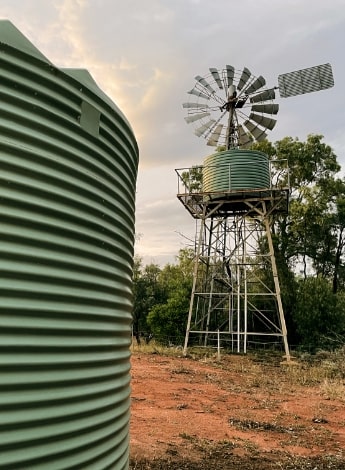
Setting rural generalist physiotherapists up for success

Chronic staff shortages and high turnover within the rural allied health workforce require targeted and discipline-specific support, writes Ellen McMaster.
The message from the Select Committee on Regional Australia’s Inquiry into Regional Australia is clear.
Workforce distribution and access to health services in rural Australia are different from and strained compared to those in more populous areas (Battye et al 2019).
There are poorer health outcomes in rural and remote locations and limited access to services for patients is thought to contribute to that (Australian Institute of Health and Welfare 2020).
Allied health is part of the picture commonly referred to in mainstream media as ‘doctor and nurse shortages’ and physiotherapy is a significant part of this workforce.
The scope and value of physiotherapy have grown in recent decades, largely due to quality research
providing evidence that guides practice in physiotherapy.
Meanwhile, the impact of the world’s ageing population is being felt.
The strain on the world’s health systems due to the COVID-19 pandemic has compounded this situation in 2020–2022.
In rural Australia, the mismatch between demand and workforce growth has reached critical levels.
The reality is that in many regional areas where there are funded physiotherapy positions, people with the right qualifications and levels of experience are not applying for the jobs.
This is occurring in the public and private sectors.
When people do apply for rural jobs, public health recruitment processes are lengthy and often unsuccessful.
A job that requires an experienced clinician due to the breadth and demands of the job may continually fail to recruit.
Locums are frequently used, which is an expensive, short-term solution.
Recruitment processes for such short-term solutions drain valuable manager time and training resources within organisations.
There are also often significant service delivery inefficiencies and gaps between recruits.
Early career physiotherapists recognise that professionally and personally they will benefit from the supported professional development and supervision that is available consistently in larger workplaces.
Human factors also contribute to the challenge of recruitment in rural locations.
It is human nature to choose to live in communities with which we are familiar.
It is the easier path, with perhaps more tangible lifestyle rewards.
Clinicians willing to work in rural areas, where there is usually a skeleton workforce, require a broad skill set in order to cover the needs of the community.
A ‘community’may spread across 4000 square kilometres and within that area they may be the only clinician of their discipline.
These ‘rural generalist’ health professionals use their discipline-specific qualifications and professional standards to guide practice, as do the rest of their colleagues in the profession.

Ellen McMaster with family members (photo supplied).
However, rural practice requires additional interdisciplinary skills such as engaging with the rural community, leadership and love of a challenge.
Skills can be developed by clinicians through experiential learning over the years or, alternatively, through an entry-level training pathway that includes dedicated same-discipline supervision and support, the Allied Health Rural Generalist Pathway (AHRGP), designed to fast-track resilience in rural practice (Services for Australian Rural and Remote Allied Health 2022).
With the workforce stretched to breaking point, supervision is very difficult to access in rural practice.
Such broad workforce failure means that the rate at which early career clinicians take on rural practice needs to be boosted and supported early in health professionals’ careers to meet the clinical need in rural Australia.
Following the recommendations made by then National Rural Health Commissioner Professor Paul Worley (Australian Government 2020), steps have been taken to begin this work, led by peak body Services for Australian Rural and Remote Allied Health.
The AHRGP is an important stepping stone into rural practice for allied health professionals—the Survival 101 internship, if you like.
Physiotherapists are primary care providers and potentially first contact practitioners.
They may undertake tasks such as skilful musculoskeletal assessments in emergency departments, referring for imaging and escalating high-risk, high-disease-burden patients.
Appropriate workplace training that is resourced, clinical supervision and support for early career personnel are essential for the safety of patients, the careers of health professionals and the future of the profession as a whole.
Genuine solutions are needed to counter the workforce failure phenomenon affecting physiotherapy in rural Australia and there will be differences between what works in public health and what works in the private sector.
There are also opportunities to pool resources to create full-time jobs that may be more attractive to potential employees.
The following is a summary of the evaluation of one method of workforce development used in public health in New South Wales to address chronic rural vacancies in physiotherapy (McMaster et al 2021).
The AHRGP was applied to a combined resource set that was temporarily repurposed in the public health system to address chronic recruitment and retention challenges.
The pilot aimed to restore and maintain physiotherapy services in three specific rural communities.
An additional two locations were added in a later phase of the project, which was implemented using redesign methodology.
A summative evaluation using mixed methods design was completed after a four-year period.
Existing workforce funds were redesigned to ensure discipline-specific supervision and early career staff were supported according to the AHRGP strategy.
This included a time allocation for targeted professional development and a shared same-discipline supervisor providing a combination of in-person and remote supervision.
Telehealth and working with allied health assistants were integral parts of the strategy.

A rural generalist might be the only physiotherapist in 4000 square kilometres.
The physiotherapists lived and worked in the rural towns and there was an opportunity for career advancement in situ at the conclusion of the training program.
After three years of difficulty with recruitment, all of the five targeted positions were filled within five months.
Access to public physiotherapy services that had not previously been consistently available in 10 rural communities resumed.
The physiotherapy positions in most cases provided outreach beyond the base location.
Physiotherapy services stabilised and expanded, with a statistically significant increase in service activity due to the intervention (R-squared 29 per cent, p<0.05).
The average retention period for staff was 2.9 years [range 0.25–3.83 years, n=7] at December 2020, which is noticeably higher than previous research retention rates reported in rural health literature (Cosgrave 2020).
This model addressed the immediate problem and offered recommendations for future opportunities for resourcing effective rural allied health workforce development strategies.
The multi-factorial AHRGP provided a solid foundation in rural practice for the participants in this pilot.
It achieved favourable outcomes in workforce recruitment, retention, service delivery, professional development, support and supervision over a four-year period, some of which was during the COVID-19 pandemic.
Flexible use of workforce resources enabled the provision of a discipline-specific supervisor working across a wide geographic area to support early career clinicians.
The pilot demonstrated effective strategies for the ‘development phase’ of a targeted system for filling vacancies within the same discipline across jurisdictions in the medium term.
However, this model required significant senior staff resources and interjurisdictional collaboration.
It did not offer a sustainable method of addressing the ongoing turnover of rural allied health staff without a more systemic approach and appropriate resourcing.
The risk of returning to the status quo remained unchanged in each location using this method of workforce development.
Continued effort and resourcing for targeted allied health workforce development are necessary to sustain rural allied health services.
Once established in rural practice, the clinicians in the pilot highlighted the need for access to additional discipline-specific professional development opportunities relevant to their work as rural generalist physiotherapists.
An opportunity exists to build such a career pathway in physiotherapy, from early career to advanced practice across multiple clinical areas.
Encouraging rural clinicians to pursue discipline-specific training and to gain recognition for a high level of expertise as a generalist physiotherapist in rural practice is an important step towards ensuring high-quality patient care as well as addressing the recruitment and retention problems in rural practice.
>> Ellen McMaster APAM is a physiotherapist based in rural New South Wales, chair of the APA’s National Rural Advisory Council and the rural representative on the APA’s NSW Branch Council.
- References
-
Battye, K., Roufeil, L., Edwards, M., Hardaker, L., Janssen, T. and Wilkins, R. ‘Strategies for increasing allied health recruitment and retention in rural Australia: A rapid review.’ Services for Australian Rural and Remote Allied Health (SARRAH), 2019.
Australian Institute of Health and Welfare. ‘Rural and remote health’, 2020. aihw.gov.au/reports/australias-health/rural-and-remote-health
Services for Australian Rural and Remote Allied Health. ‘The Allied Health Rural Generalist Pathway’, 2022. sarrah.org.au/our-work/ahrgpathway
Australian Government (Department of Health). ‘National Rural Health Commissioner Final Report.’ Canberra, Australia, 2020.
McMaster, E., Reid, T., Farquhar, E., McMaster, D., Buckley, D. and Green, E. ‘Responding to rural allied health workforce challenges in the public health system: Evaluation of the Allied Health Rural Generalist Pathway pilot in western New South Wales.’ The Australian journal of rural health, 29(5), 2021, 701–720. https://doi.org/10.1111/ajr.12797
Cosgrave, C. ‘The Whole-of-Person Retention Improvement Framework: A Guide for Addressing Health Workforce Challenges in the Rural Context.’ Int J Environ Res Public Health, 17(8), 2020. doi.org/10.3390/ijerph17082698
-
© Copyright 2025 by Australian Physiotherapy Association. All rights reserved.





